How to make your own dairy-free nut milk (including pumpkin, sunflower and oat)
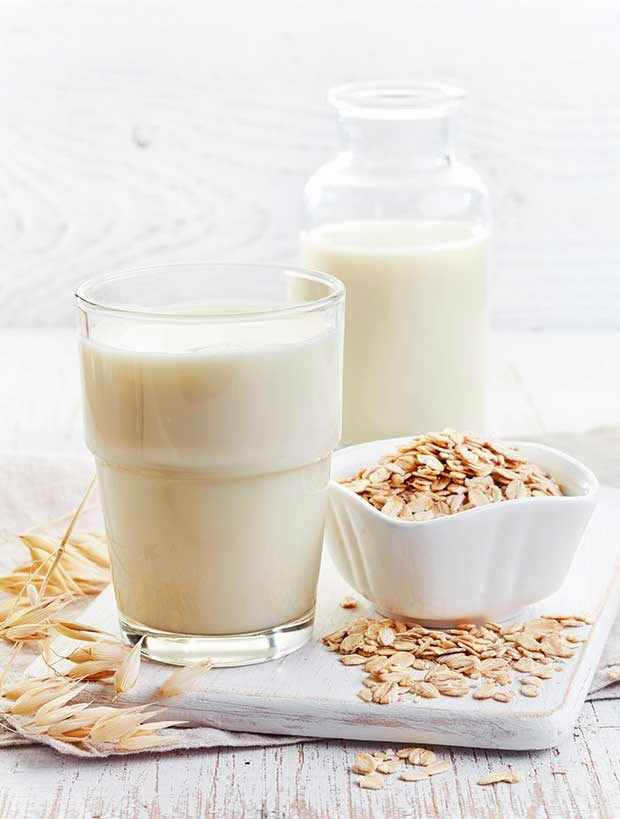
Almond, coconut, soy and rice are all popular dairy-free milk alternatives, but there are easier options you can grow and make yourself.
Words: Jane Wrigglesworth
Consume any of the popular alternative milks in large quantities and the price adds up. However, there are other milk alternatives which are quick and
easy to grow.
Pumpkin seeds, sunflower seeds and oats can be turned into nut-free, dairy-free milks that are appetising, full of nutrients, and can be grown and harvested in one season.
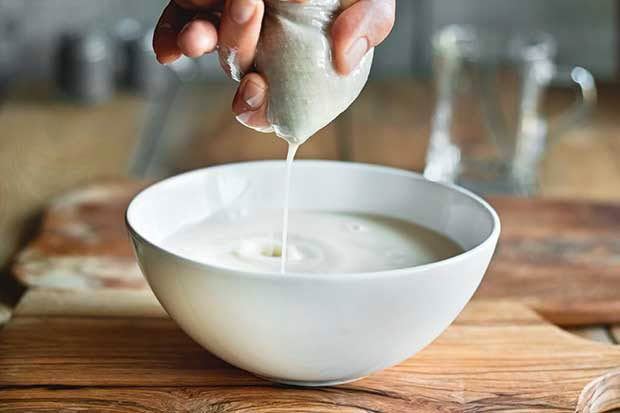
All contain tryptophan, an essential amino acid. It is a precursor to serotonin, which in turn is a precursor to melatonin, the ‘sleep’ hormone.
Pumpkin Seeds
Pumpkin seeds are high in iron, zinc, magnesium, manganese, copper, and healthy fats.
It’s easy to grow your own pumpkins. To grow them specially for seeds, choose a variety that has hull-less seeds, like Austrian Hulless (Koanga Gardens). Each pumpkin of this variety can produce around 120-130g of seeds.
“The seeds are larger and better tasting than all other varieties we have tried, mature in areas with short growing-seasons; if you have a longer season they just keep on producing,” says Kay Baxter of Koanga Gardens.
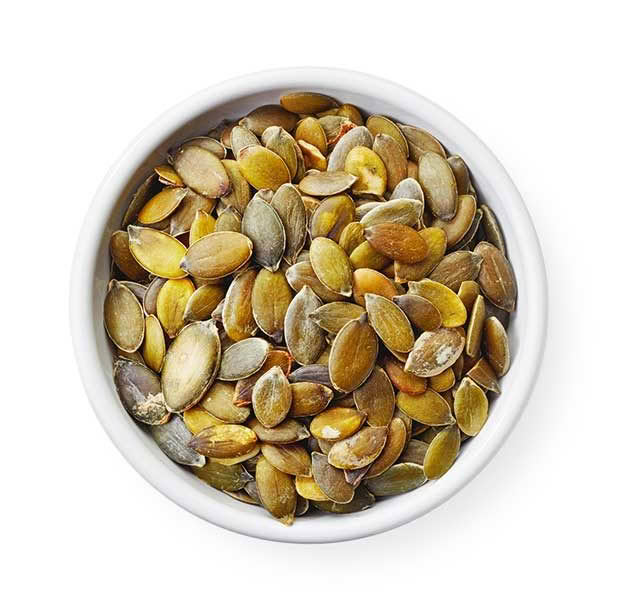
Harvest timing is important. “They must be picked when the pumpkins get yellow stripes, and be left for a few weeks before removing the seed,” says Kay. “If you leave the ripe fruit on the vine and it rains, the seeds often sprout inside and become useless.
“When you pick and store them before harvesting the seeds, the seeds will be far better quality.”
The flesh of these pumpkins is reportedly not a nice flavour or texture, although some gardeners use it in pumpkin pies, cakes and cookies. It can also be fed to animals, but apparently, they don’t like it much either.
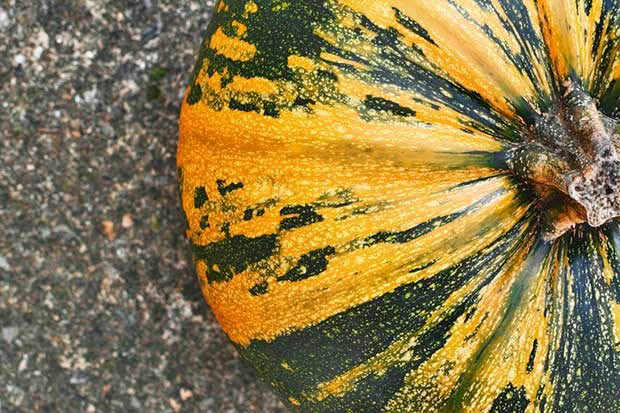
Keep your Austrian Hulless away from zucchini in the garden if you want pure seeds for sowing next season, as they cross-pollinate.
PUMPKIN SEED MILK
Pumpkin seed milk has a slightly green hue and tastes like almond milk. If you want to give your milk a lift, add 1 teaspoon of vanilla extract to the mix.
INGREDIENTS
1 cup pumpkin seeds
water
salt
METHOD
Soak the pumpkin seeds overnight at room temperature in two cups of water. Drain and discard the soaking water. Add seeds to a high-powered blender with 5 cups of fresh water and a pinch of salt.
Process until smooth. Strain the blended mixture in a nut-milk bag or through a piece of muslin, squeezing it to extract the last of the milk. The milk will keep in the fridge for 3-4 days.
Sunflower seeds
Sunflower seeds are rich in nutrients, including vitamins E, B1, B3, B6, folate (B9), copper, magnesium, selenium, and high levels of tryptophan. Sunflowers are easy to grow and harvest.
What isn’t easy is hulling the seed. Commercially, sunflower seeds are hulled by large machines, but these are beyond the budget of the small farmer.
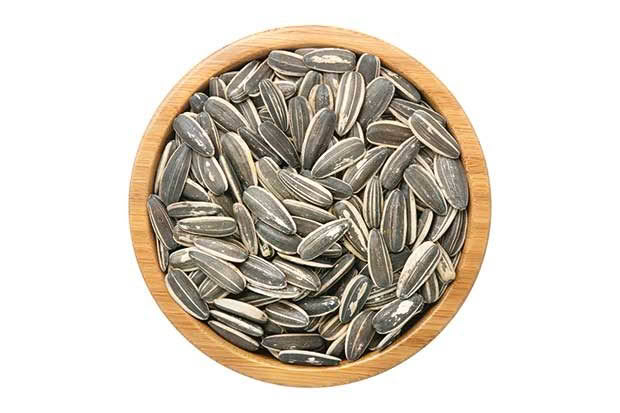
“In the USA, it’s a common snack,” says Gerard Martin of Kings Seeds. “People buy unhulled sunflower seeds, chew them for a few minutes then spit out the fibrous, husky hulls.
“But if you can’t be bothered with that, try the following trick, which works well for me.”
• spread the seeds in a single layer on your kitchen benchtop (or other flat surface);
• roll over them with a heavy rolling pin, adjusting the pressure so that the hulls crack but you don’t crush the seeds;
• scoop into a flat basket and take outside to winnow – you need either a windy day or to place a fan in front of the basket, to blow the hulls away.
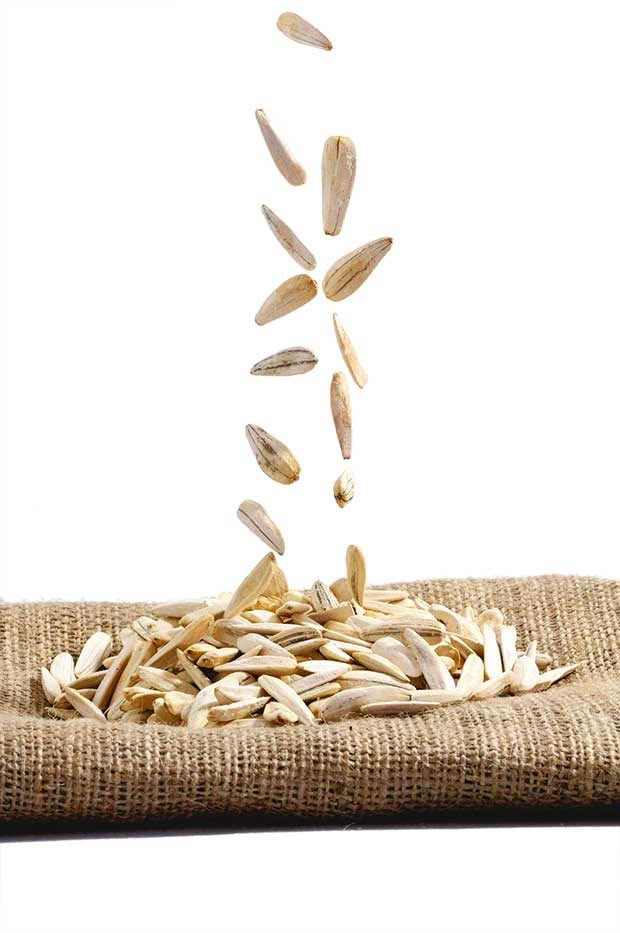
The larger-seeded types are the best for milk, says Gerard. His suggestions are:
• Incredible Dwarf
• Golden Toasted (a hybrid specifically bred for edible seeds)
• Skyscraper
SUNFLOWER SEED MILK
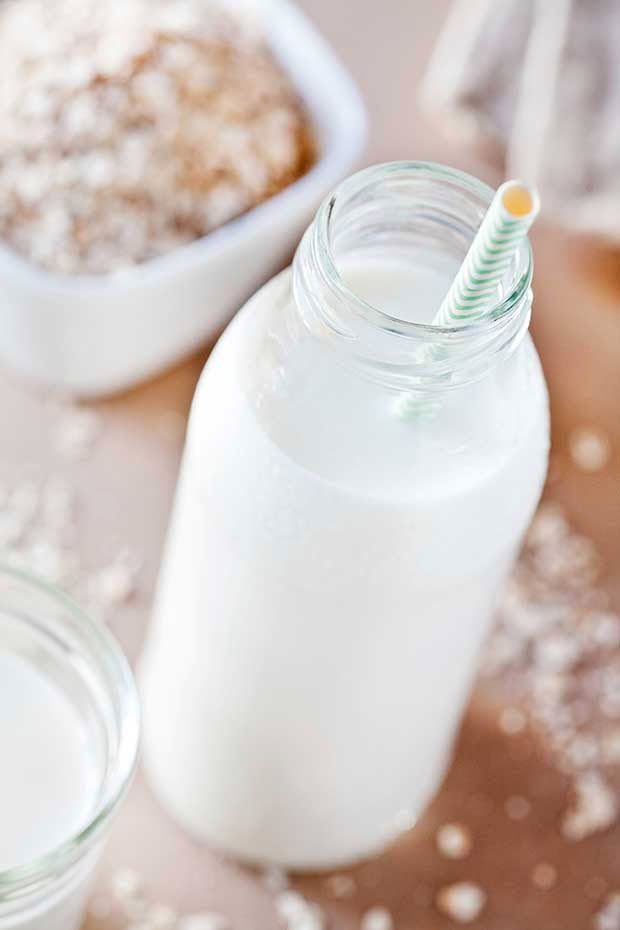
This is a great-tasting, nutty-flavoured alternative to a nut milk.
INGREDIENTS
1 cup sunflower seeds
water
salt
METHOD
Soak the sunflower seeds overnight in 2 cups of water. Drain and discard the soaking water. Add seeds to a high-power blender with 5 cups of fresh water and a pinch of salt and process until smooth.
Strain the blended mixture in a nut-milk bag or through a piece of muslin, squeezing it to extract the last of the milk. The milk will keep in the fridge for 3-4 days.
Oats
Oats are high in manganese, copper, magnesium, chromium, zinc, B vitamins, protein, polyunsaturated fats, tryptophan, and beta glucans, which can help lower blood cholesterol levels.
Approximately 6000ha of oats are grown in New Zealand, mostly in Otago and Southland. These areas have the growing conditions oats love: a cool, moist climate and long summer daylight hours.
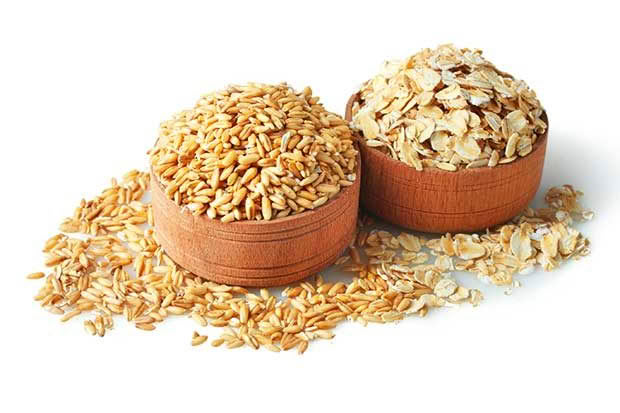
You can easily grow oats anywhere, but your production may not be as high as those grown in perfect conditions. Commercial sowing in the South Island takes place from late September to mid-October. Harvesting is done in March, and seeds can be sown again in autumn. Hull-less oats make life a lot easier.
“These oats can be easily grown, harvested and threshed by hand,” says Kay Baxter. “They are a traditional oat cultivar that would have been part of the diet of many of our ancestors from Europe.”
The harvested oat tops (or heads) are threshed to remove the husk around the groat, the part of the oat seed you eat. You can do this by hand using a flail. A flail has a long wooden handle with a tassle of strong strips of leather at its end. You lay the oat tops on a clean sheet, then beat them with the flail to remove the husks.
But it is far easier to use a meat grinder. You’d think the groats would be crushed, but not so, according to Canadian lifestyle blockers and bloggers Freija and Beringian. They write: “We tried it first without the blades, but it left much of the oats unthreshed. So we put the blades back in, and ran the oats through; not one was chopped, and all the heads were threshed.”
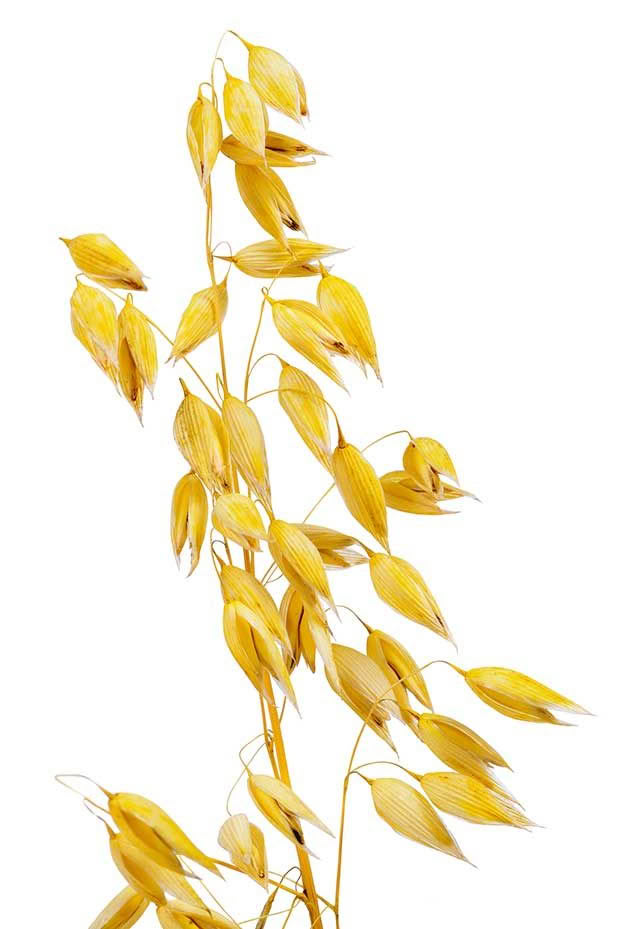
The type of plate is important. “Our grinder came with two plates, one small and one with large holes. We use the plate with the large holes, about one-half or three-eighths of an inch diameter (10-13mm). Because of the space between the blades and screen, as well as the size of the holes, very few kernels are actually cut by the blades.”
However, an oat over 12 per cent moisture will make for poor threshing. “The best way to tell if they are ready to thresh is to rub a few heads between the palms of your hands. If the oat kernels come out easily, then it is dry enough.”
If they are slightly damp, hang a half-full burlap bag or pillowcase of seeds in a dry, airy place inside. “Keep checking and turning them in the sacks until they thresh out easily in your palms.”
OAT MILK
Oat milk is lovely and creamy compared to pumpkin and sunflower seed milk, but not as sweet. If you want a sweeter milk, add vanilla extract or dates to the mix before blending.
INGREDIENTS
1 cup whole rolled oats
water
salt
METHOD
Soak the oats overnight in 3 cups water. Drain and discard the soaking water. Add the oats to a high-power blender with 4 cups of fresh water and a pinch of salt and process until smooth. Strain the blended mixture in a nut-milk bag or through a piece of muslin. The milk will keep in the fridge for 3-4 days.
6 TIPS FOR MAKING NUT MILK
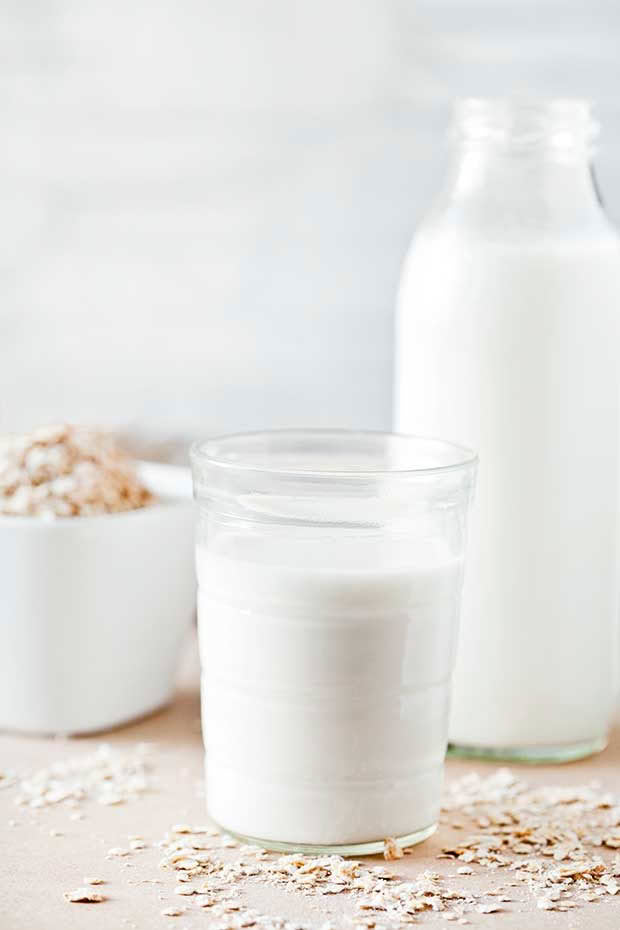
• You will need a powerful, high-speed or ‘super’ blender to make these milks – a regular blender won’t handle the processing required. Epicurious.com reviewed 12 super blenders and found the top three to be:
– Breville Boss
– Vitamix A3500
– Cuisinart Hurricane Pro
• Soaking the oats and seeds – or nuts if you’re using them – overnight results in a creamier milk. It allows the oats, seeds or nuts to become fully saturated, which means they blend better and leave behind less pulp.
• All grains, edible seeds and nuts contain phytic acid, or phytate, which impairs the body’s absorption of calcium, copper, magnesium, iron and zinc. Soaking overnight at room temperature allows enzymes and other organisms to break down and neutralise the phytic acid, reducing the phytate content.
• The water ratios suggested in these recipes are a guide only – if you want a more concentrated mix, add less water.
• If you prefer a sweeter milk, add a few drops of vanilla essence and/or a couple of dates to the blender.
• Use the leftover pulp in baking, soups and sauces, or dry it in a low-temperature oven or a food dehydrator to use in place of breadcrumbs.
Love this story? Subscribe now!
 This article first appeared in NZ Lifestyle Block Magazine.
This article first appeared in NZ Lifestyle Block Magazine.
